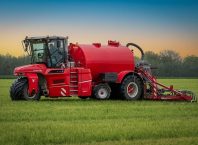An industrial mixer is a crucial component in many manufacturing processes. They’re also expensive pieces of equipment, a major investment of your time and resources. Because of all the cash that goes into one, along with all the other elements, you need to make sure you get the right one. This can seem complicated due to the number of factors to consider.
While there are a number of considerations, there are six that are among the most important. These six are the ones that you should keep in mind on top of things like price and the type of industrial mixer you need. Whether you choose to have an emulsifier mixer or a different model, these elements are the things you must remember before you make a purchase.
Contents
Vessel Capacity
One major element is the capacity of the mixing vessel itself. The amount of material it could contain is going to dictate a part of your production cycle. A smaller capacity means you’re working in smaller batches, with fewer products being produced per cycle or batch. A larger one takes up more space, but means you’re making more of your product per cycle.
The capacity is important. Whether you work in producing different batches of various products or you need the process to run continuously, the capacity is going to be a limit on your production ability. If it’s too low, you’re hamstringing your own business. You want a capacity high enough for your needs and with potential room to grow.
Power Consumption
Take a moment to think about the power the mixer consumes. Every piece of industrial equipment eats up power, and you need to keep this in mind. Power consumption can drive up the cost of production, which in turn will affect every other aspect of your operations.
A related factor is related to workplace safety. A standard electrical mixer might be good for a number of industries, but air-driven designs are useful in other contexts. There might be safety-related concerns that make an air-driven industrial mixer more appealing than a traditional electrical one. Take the time to consider your space and see which one is safer.
RPM and Impeller Size
The RPM and impeller size is also an important consideration. The slightest change in the diameter can cause an increase in the power needed to get the mixing done. It can also be something you consider based on what you’re making because some production methods need more or less RPM per diameter than others.
Torque
Torque is the rotational force required for the motor of the mixer. Usually, this will be measured in pounds or ounces. The torque you need will vary based on the liquids that you’re working with, as some will need more than others. Horsepower is how efficient the motor is in delivering the right torque and revolutions per minute, so these two are closely tied.
The Production Cycle
Another important consideration is the production cycle and how long it takes. Different mixers process their content differently, so that should be kept in consideration. After all, if you buy an industrial blender that takes too long, your production cycle takes longer than it should.
Mixer Shear Rate
There is also the shear rate, which is the rate of change of velocity which allows one liquid to pass over an adjacent layer. This is a crucial part of the mixing process and something that you should know well. The chemicals and liquids that you’re mixing will determine the shear rate you need, and it’s all based on the viscosity of the base ingredients.
Here’s a look at the various liquids that you might be working with.
Newtonian
Newtonian liquids are what most people are familiar with since it includes mineral oils and water as examples. These retain their natural viscosity no matter the mixing speed you use. Since water is one of the most used liquids in the world, you don’t need to be overly concerned about the shear rate here.
Thixotropic
Thixotropic liquids include things like ink, peanut butter, glue, and liquid soap. These will see their viscosity decrease as you increase the agitation via a higher speed.
Pseudoplastic
A pseudoplastic is one that loses viscosity as the shear rate goes up. If you’re working with lotions, gels, paints, and latex in its liquid form, then your production cycle involves this type of liquid.
Dilatant
Finally, dilatant liquids are often used in the making of candy, as well as any process that mixes clays and slurries. These will become thicker and more viscous as the shear rate of the mixer speed increases.
Conclusion
These details are important to remember when you’re about to buy an industrial mixing machine. While these may not seem important at first, it is of vital importance because all these factors come into play. Each of these can affect not only your ability to mix your product, but also how long it takes to get done and how productive you are overall.












